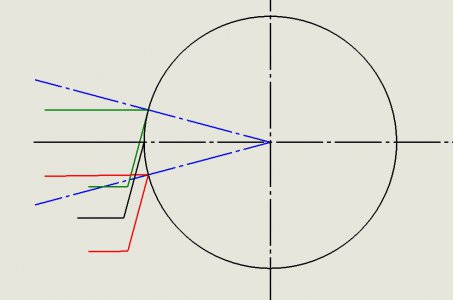It is all about what I will call the angle of attack for want of a better descriptor, which is the angle the cutting face to a perpendicular to the work surface at the point of contact. A positive angle will result is less deformation of the chip resulting in less curl and requiring less energy. TA negative angle of attack will result in tight curls and require more energy.
The angle of attack will depend on two factors, the rake of the tool and the cutting edge height with respect to the centerline of the lathe. TGhe following illustration shows this. The illustration is exaggerated for purposes of demonstration.

It show a tool with zero rake and a 15º clearance angle. The tool in black is contacting the work on the centerline and the angle of attack is 0º and the effective rake remains zero. The tool in green has an angle of attack of +15º and an effective positive rake of 15º. In contrast, the tool in red has an angle of attack of -15º and a 15º effective negative rake.
Unless the tool cutting edge is on the center line, the attack angle will change as the diameter of the work is reduced. When parting, as the diameter is being reduced. I have seen a sweet spot where the parting seems effortless and chips are coming off in nice curls, only to run into problems as I progressed further. If the tool is above the centerline, there will be a point where the relief angle goes to zero. If is is below the centerline, at some point the effective rake will go negative.
Of course, this doesn't take into account machine rigidity and available torque. A large machine can bull its way through without much concern while a small machine with limited torque will struggle.
I once tread an early book on farming and there was a whole section dealing with properly tuning a plow. Back then, plows were literally single horsepower. The book dealt with getting a multitude of angles just right to cut a uniform furrow with minimal load on the horse.. Modern agriculture uses tractors with fifty to one hundred times the horsepower and little effort needs be applied to tuning the plow.
IMO, this is a big reason why some people have little difficulty parting cleanly while others struggle. One has to understand the idiosyncrasies of their machine and come to a realization of what works best for them. Other people's solutions are only a starting point.
.


